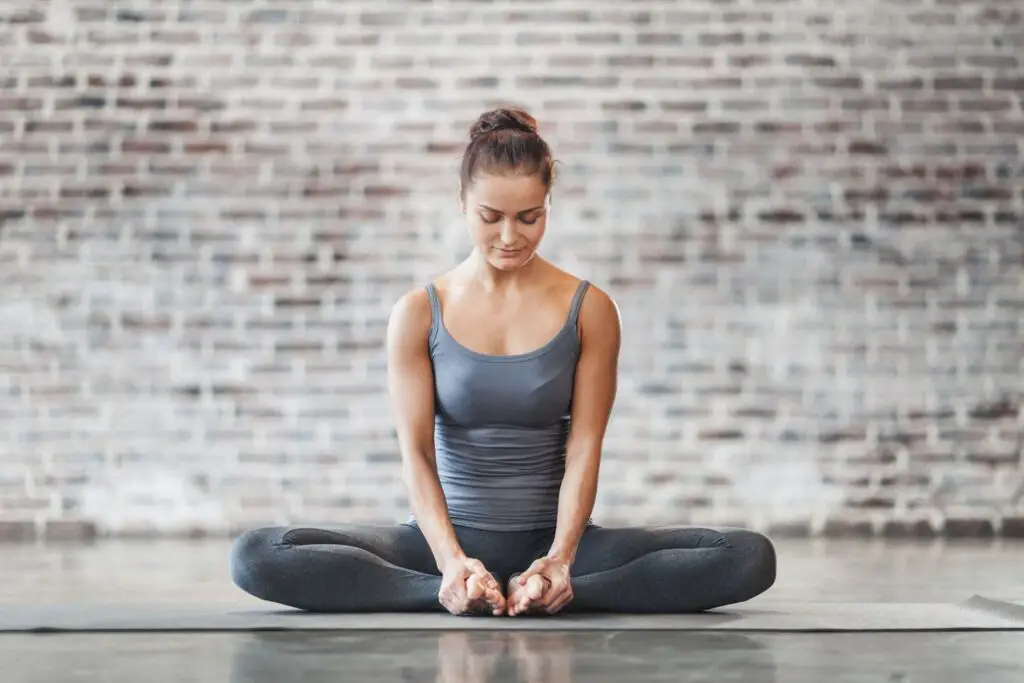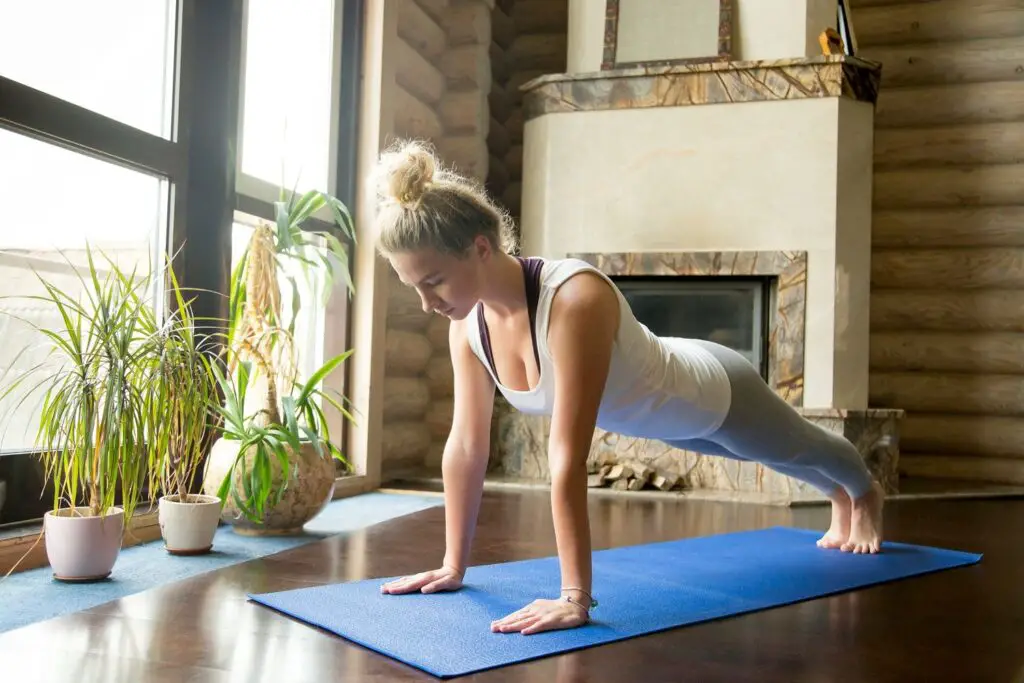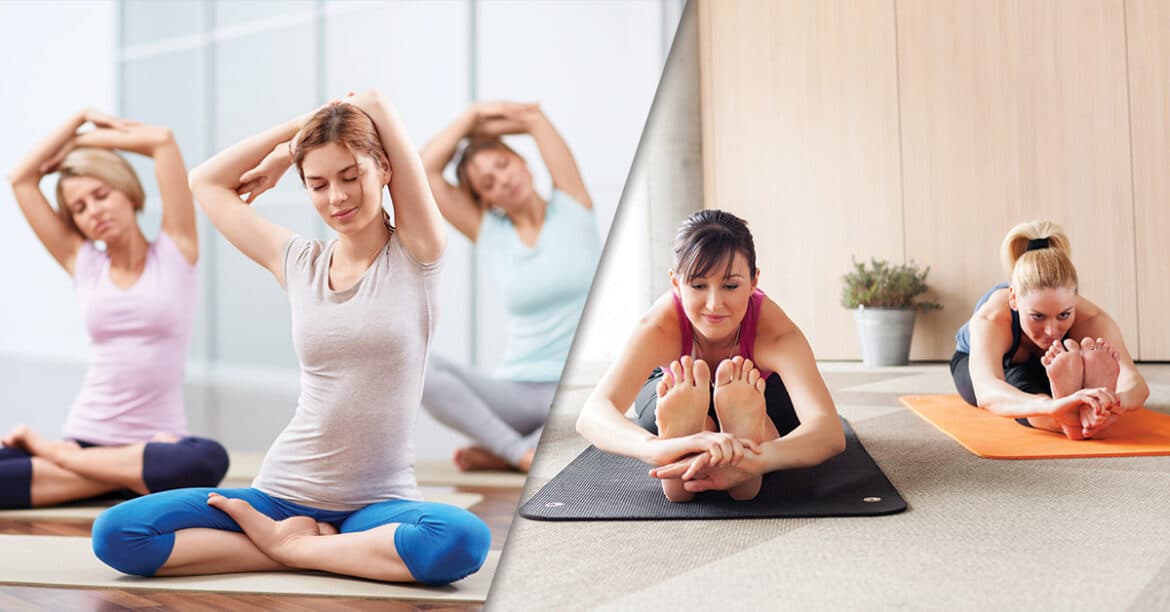Introduction
Is Pilates Harder Than Yoga: The realms of physical fitness and wellness offer a diverse array of exercise modalities, each with its unique challenges and benefits. Among these, Pilates and yoga stand out as two popular practices that focus on enhancing strength, flexibility, and overall well-being. In this exploration, we will delve into the fundamental differences between Pilates and yoga, dissecting the physical demands, mental aspects, and overall difficulty levels of each practice to shed light on this intriguing comparison. By examining these aspects, we can better understand the nuanced challenges that each discipline presents and ultimately determine whether one is indeed more challenging than the other or if it simply comes down to personal preference and goals.
Ultimately, whether Pilates is harder than yoga depends on an individual’s fitness goals and preferences. Some may find Pilates more challenging due to its targeted focus on core strength and controlled movements, while others may perceive yoga as more demanding because of its emphasis on flexibility and balance, or due to the mental challenges of meditation and mindfulness.
It’s also worth noting that one’s personal fitness level and experience can significantly impact their perception of difficulty in either practice. Beginners might initially find both Pilates yoga challenging, but with consistent practice, they can adapt and progress in either discipline. The question of whether Pilates is harder than yoga doesn’t have a definitive answer, as it largely depends on individual factors and preferences. Both practices offer a multitude of physical and mental benefits, and choosing one over the other should be based on personal fitness goals and what resonates most with an individual’s interests and needs.

Which is more difficult Pilates or yoga?
Pilates exercises are a lot more intense and results may be noticed much quicker than yoga. Through frequent Pilates exercises, a flatter and firmer stomach may be easier to obtain. If you have back issues, care has to be taken with some yoga poses as they can sometimes exacerbate the problem.
Level of Difficulty
Pilates exercises can range from beginner to advanced levels, and the difficulty varies depending on the specific exercises and routines. Many beginners find Pilates to be challenging because it demands a strong core and requires precise movements. However, as individuals progress and build strength and flexibility, they often find it more manageable and even enjoyable.
Benefits of Pilates
Core Strength: Pilates is renowned for its ability to strengthen the core muscles, including the abdominal muscles, lower back, and pelvis.
Improved Flexibility: Regular practice of Pilates can increase flexibility and joint mobility, reducing the risk of injury.
Posture Correction: Pilates emphasizes proper alignment and can help improve posture and reduce back pain.
Enhanced Mind-Body Connection: The focus on breath and body awareness in Pilates promotes mindfulness and reduces stress.
Is yoga or Pilates better for beginners?
“Yoga is a little bit more accessible for someone brand-new,” says Brandenberg. Because of the importance of proper technique and moving with precision in Pilates exercises, it’s common for first-timers to walk out of a mat class saying, “I didn’t feel anything.” It’s something you need to invest in, Brandenberg says.
Which is Better for Beginners
Ultimately, the choice between yoga and Pilates for beginners depends on individual preferences and goals. Yoga is a great choice for those seeking stress reduction, flexibility, and adaptability. Pilates, on the other hand, is ideal for beginners looking to build core strength, improve posture, and develop precise movement control.
Many individuals find that a combination of both practices provides a well-rounded approach to fitness and well-being. Starting with one and gradually incorporating the other can be a fantastic way for beginners to explore their fitness journey and discover which practice resonates with them the most. In any case, consulting with a qualified instructor or healthcare professional can help beginners make an informed decision based on their unique needs and goals.
Is Pilates hard for beginners?
However, we’d be lying if we said Pilates was easy. Because it most definitely is not. Prepare to get your rear handed to you, but in the best way. So before you step up on that contraption we call a Megaformer, it’s a good idea to learn some of the mistakes Pilates newbies make, and how you can avoid them.
Is Pilates Hard for Beginners
Core Strength Requirement: Pilates places a strong emphasis on the core muscles, which can be challenging for beginners who may not have a strong core foundation. However, Pilates is designed to help build this strength gradually over time.
Precise Movements: Pilates exercises often involve precise, controlled movements that require attention to detail. Beginners might initially find it challenging to coordinate these movements, but with practice, they can improve their precision.
Breathing Awareness: Proper breathing is a fundamental aspect of Pilates, and beginners may need time to learn and integrate this aspect into their practice.
Adaptability: Pilates can be adapted to suit different fitness levels. Many instructors offer beginner-level classes or modifications to make exercises more accessible.
Progression: Pilates workouts can be tailored to the individual, allowing beginners to start with basic movements and progressively move to more advanced exercises as they gain strength and confidence.
Which burns more Pilates or yoga?
Yoga and Pilates are both good for weight loss — but yoga, especially vinyasa yoga, burns more calories per hour.
Pilates
Pilates is a low-impact exercise that focuses on controlled movements and strengthening the core muscles. While Pilates is excellent for building muscle tone, improving flexibility, and enhancing overall body awareness, it is not primarily designed for significant calorie burning.
Calorie Burn in Pilates: A typical Pilates session burns fewer calories compared to high-intensity workouts. On average, a beginner might burn around 150-250 calories per hour, while an advanced practitioner might burn up to 400 calories per hour. However, these numbers can vary based on factors like intensity and individual body composition.
Yoga
Yoga encompasses a broad range of practices, each with its own level of intensity. Hatha and gentle yoga are usually less intense and may not burn as many calories, while styles like Vinyasa, Power, and Ashtanga yoga involve more movement and can increase the calorie-burning potential.
Calorie Burn in Yoga: The calorie burn in yoga varies significantly based on the style and intensity of the practice. A gentle or restorative yoga class may burn around 150-250 calories per hour, whereas a more vigorous Vinyasa or Power yoga class can burn 300-600 calories per hour or even more.
What is the hardest part of Pilates?
The boomerang is considered one of the hardest Pilates exercises, as it requires every muscle in your body to do. How to do it: Sit tall on your mat, legs in front of you, ankles crossed, and hands by your sides. Scoop your belly and round back, lowering yourself onto your mat one vertebra at a time.
Core Engagement
Pilates places a significant focus on core strength, which involves muscles in the abdomen, lower back, and pelvis. Engaging these muscles correctly can be one of the most challenging aspects for beginners. It requires a conscious effort to activate and maintain the core throughout various exercises.
Solution: Patience and practice are key. Beginners should start with foundational exercises and gradually progress to more advanced movements as they develop core awareness and strength. Working with a certified Pilates instructor can provide valuable guidance on proper core engagement.
Precision and Control
Pilates exercises require precise and controlled movements, which can be challenging for those accustomed to more dynamic or fast-paced workouts. Maintaining control while performing slow, deliberate motions can be mentally and physically demanding.
Solution: Focus on breath and mindfulness. Concentrate on the details of each movement, and use your breath to support control. Remember that precision improves with practice, so don’t be discouraged by initial difficulties.
Flexibility and Range of Motion
Pilates aims to improve flexibility, but many beginners may find themselves limited by tight muscles and restricted range of motion. This can make certain exercises uncomfortable or challenging.
Solution: Incorporate regular stretching into your routine to improve flexibility gradually. Over time, you’ll notice increased ease in performing Pilates exercises. Be patient with yourself and avoid pushing too hard to prevent injury.
Why is Pilates so tough?
It’s a controlled move, it’s precise, the core is holding strong, the arms and legs are stable. The full body is strong and stable. You see, the difficulty and effective work does not just come with the movement, it comes with the stillness and stability within a Pilates move.
Emphasis on Core Strength
One of the defining features of Pilates is its unwavering focus on core strength. The core encompasses muscles in the abdomen, lower back, and pelvis, and strengthening these muscles is essential for stability and proper movement. Many people find it challenging to engage and sustain their core muscles consistently throughout Pilates exercises, as it requires concentrated effort and practice.
Why It’s Tough
Core engagement is essential in Pilates, and it can be difficult to maintain this engagement during movements.
Weak or underdeveloped core muscles may struggle to support the body, leading to fatigue and discomfort.
As the core is integral to balance and posture, its strengthening can be initially demanding but incredibly rewarding in the long run.
Precision and Control
Pilates emphasizes precise, controlled movements. This precision challenges individuals who are accustomed to more dynamic or high-intensity workouts. Pilates requires practitioners to slow down, focus on the details of each exercise, and execute movements with grace and control.
Why It’s Tough
The deliberate pace of Pilates can be mentally and physically demanding.
Achieving and maintaining precise form can be challenging, especially for beginners.
Control and coordination must be developed, which can take time and practice.
Flexibility and Range of Motion
While Pilates aims to improve flexibility, many individuals start with limited range of motion and tight muscles. This can make some Pilates exercises uncomfortable and challenging, especially when trying to achieve the full range of motion required for certain movements.
Why It’s Tough
Limited flexibility can hinder the execution of certain exercises and limit range of motion.
Initially, some movements may feel awkward or uncomfortable as the body adapts to new positions.
Progressing in flexibility and range of motion can be slow and may require dedicated stretching and mobility work.
What age is best for Pilates?
This is a question we get asked a lot. Pilates is suitable for all ages and we have clients of all ages who benefit from a Pilates workout. In fact, many of our clients are middle-aged or older. It is important to keep the body strong and supple as we age.
Children and Teens
Pilates can be introduced to children and teenagers, typically starting around the age of 7 or 8, provided they are physically mature enough to follow instructions and engage in controlled movements. Pilates can help young individuals develop body awareness, improve posture, and enhance flexibility. It can also be beneficial for athletes looking to complement their sports training and prevent injuries.
Adults
Pilates is highly popular among adults, whether they are in their 20s or well into their senior years. Adults often turn to Pilates for various reasons, including fitness, stress reduction, and rehabilitation. It’s never too late to start Pilates, and its adaptability makes it suitable for individuals of different fitness backgrounds.
Seniors
Pilates is particularly valuable for seniors because it is a low-impact exercise that can be tailored to their specific needs and limitations. As people age, maintaining strength, balance, and flexibility becomes crucial for maintaining independence and preventing falls.
Why choose Pilates over yoga?
If you want to increase your strength and flexibility, Pilates might be the better choice. If you want to improve your overall wellness, you might choose yoga. Still, much depends upon the particular classes available to you and the skills and qualifications of the instructors.
Core Strength and Muscular Endurance
Reason to Choose Pilates: If you’re primarily interested in building a strong core, Pilates is an excellent choice. Pilates exercises are designed to target the muscles of the core, including the abdominals, lower back, and pelvic floor. Consistent Pilates practice can lead to improved core strength, stability, and muscular endurance.
Precision and Alignment
Reason to Choose Pilates: Pilates places a strong emphasis on precise and controlled movements. If you enjoy exercises that require attention to detail and alignment, Pilates might be your preferred choice. The focus on precision can lead to improved body awareness and posture.
Low-Impact Exercise
Reason to Choose Pilates: Pilates is generally low-impact, making it suitable for individuals with joint issues or those looking for a gentle yet effective workout. It is kind to the joints while still providing a challenging workout for the muscles.
Rehabilitation and Injury Prevention
Reason to Choose Pilates: Many people turn to Pilates for rehabilitation purposes. It can be particularly beneficial for those recovering from injuries or surgery. Pilates exercises can help improve flexibility, strength, and balance, which can aid in the recovery process and reduce the risk of future injuries.
Variety of Equipment
Reason to Choose Pilates: Pilates offers a range of specialized equipment, such as reformers, Cadillac, and chairs, which can add variety and intensity to your workouts. These machines provide resistance and support, allowing for a more customized fitness experience.

Conclusion
Determining whether Pilates is unequivocally harder than yoga is a nuanced task. Both Pilates and yoga are dynamic practices that offer distinct challenges and benefits to individuals seeking improved physical and mental well-being. Pilates, with its focused emphasis on core strength, controlled movements, and potential incorporation of specialized equipment, can present a unique physical challenge. The engagement of specific muscle groups and the potential for higher resistance levels may lead some to perceive Pilates as more physically demanding.
On the other hand, yoga places a strong focus on flexibility, balance, and overall body awareness. It encompasses a wide array of styles, ranging from gentle and meditative to vigorous and strength-oriented, allowing individuals to choose a practice that aligns with their fitness level and preferences. Ultimately, the perception of which practice is harder varies from person to person, influenced by factors such as fitness goals, prior fitness level, preferences, and physical capabilities. Some individuals may find the precise movements and core engagement in Pilates to be more challenging, while others might feel the demands of balancing postures and achieving mental stillness in yoga to be more difficult.
In the end, the question of whether Pilates is harder than yoga is not a matter of absolute difficulty but rather a matter of personal perspective and objectives. Both Pilates and yoga offer valuable benefits and can complement each other in a well-rounded fitness routine. The most important consideration is to choose a practice that aligns with individual goals, promotes a sense of fulfillment, and encourages a consistent commitment to personal growth and well-being.

